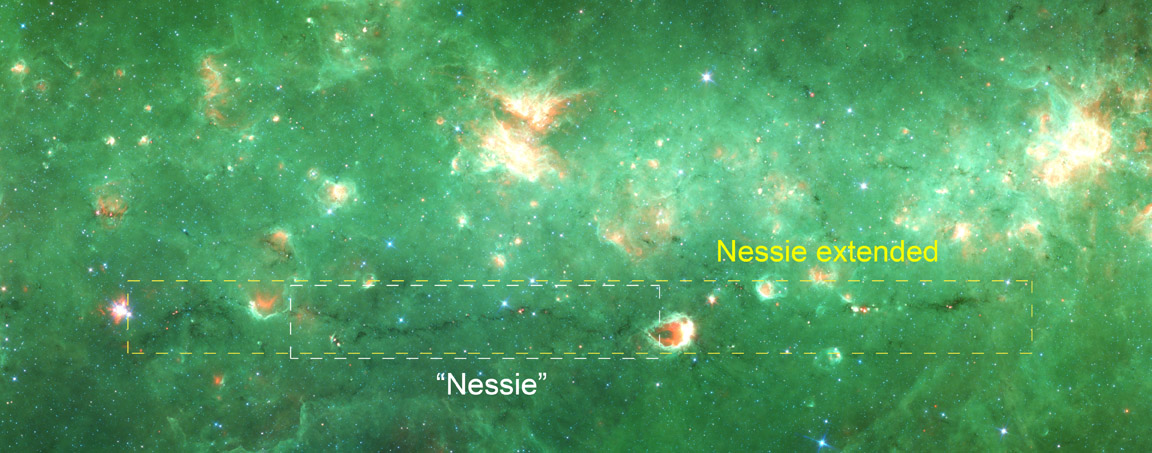Image List
-

This infrared photo of the galactic plane, taken with the Spitzer Space Telescope, centers on the Nessie structure. It spans about 2,000 by 200 light-years at the cloud's distance of 11,000 light-years (3.5 kiloparsecs).
NASA/JPL/SSC -

Researchers have identified the first "bone" of the Milky Way - a long tendril of dust and gas that appears dark in this infrared image from the Spitzer Space Telescope. Running horizontally along this image, the "bone" is more than 300 light-years long but only 1 or 2 light-years wide. It contains about 100,000 suns' worth of material.
NASA/JPL/SSC -

The galactic "bone" was identified while studying a dust cloud that in 2010 was nicknamed "Nessie" after the Loch Ness Monster. Nessie turns out to be at least twice, and perhaps as much as eight times, longer than originally claimed. Both the original 2010 "Nessie" and the extended structure are outlined and labeled here on a Spitzer infrared image.
NASA/JPL/SSC